Table of Contents[Hide][Show]
Did you know that up to 90% of visible skin changes commonly attributed to aging are actually caused by sun exposure? It’s true—the sun’s UV rays are a major contributor to the look of fine lines, wrinkles, and dark spots. In this comprehensive guide, we’ll dive into the effects of unprotected sun exposure on the skin, what photoaging really means, and most importantly, how you can protect your skin to keep it looking its healthy, radiant best.
While some sun exposure is necessary for vital processes like vitamin D production, overexposure to UV rays can lead to both short and long-term consequences for skin health and appearance. UVA rays penetrate deep into the skin, causing photoaging—the premature aging of the skin. UVB rays primarily affect the skin’s surface and are responsible for sunburns.
By understanding the impacts of sun exposure and taking a proactive approach to sun protection, you can help maintain your skin’s youthful resilience and radiance. In the following sections, we’ll explore the best practices for shielding your skin from harsh UV rays, including how to choose a safe, effective sunscreen and build sun protection into your daily skin care routine.
Does The Sun Cause Aging?
The short answer is yes—the sun can be a major contributor to skin aging. UV radiation, particularly UVA rays, penetrate deep into the skin when uncared for and can cause damage that accumulates over time. This damage includes the breakdown of collagen and elastin, two essential proteins that give skin its firmness and elasticity. As these supportive structures deteriorate, the skin loses its resilience and starts to have a sagging appearance, leading to the formation of the look of wrinkles and fine lines.
Harsh UV exposure can also affect skin cells directly. When skin is unprotected and exposed to harsh sun for long periods of time, DNA damage can occur, leading to mutations that may contribute to the development of certain skin conditions. Additionally, UV rays can cause environmental stress on the skin, further degrading the look of skin bounce and elasticity, and interfere with the skin’s natural processes. Over time, this damage manifests as visible signs of aging like the look of wrinkles, dark spots, deflated skin, and uneven skin tone.
While it’s clear that the sun plays a significant role in skin aging, it’s not the only factor at play. Other contributors include genetics, lifestyle habits like smoking and poor diet, and environmental pollutants. However, unlike these other factors, protecting our skin from sun exposure is something we can control—and wearing a non-toxic sunscreen to shield our complexion from UV rays is a powerful way to slow down the aging process.
The good news is that by applying the proper defensive layer from the sun on the skin, you can help to maintain a youthful, radiant complexion for longer. In the next section, we’ll explore the most effective strategies for protecting your skin from harsh UV rays, including how to choose a safe and effective sunscreen that works with your skin type and lifestyle.
What Is Photoaging?
Photoaging is the term used to describe the premature aging of the skin caused by repeated exposure to UV radiation. While the natural aging process (known as chronological aging) is inevitable (and beautiful), photoaging is something we can protect our skin from—and it’s responsible for a significant portion of the visible changes we associate with aging skin.
Both UVA and UVB rays contribute to photoaging, but in different ways. UVA rays, which account for up to 95% of the UV radiation that reaches the Earth’s surface, penetrate deep into the skin’s layers. These rays break down the skin’s natural collagen and elastin, leading to the look of wrinkles, sagging, and a loss of skin elasticity. UVA rays are present with relatively equal intensity throughout the day, can penetrate through clouds and glass, and are not filtered by standard window glass.
UVB rays, on the other hand, primarily affect the skin’s surface layers, contributing to sunburns, dryness, roughness, and the formation of the look of fine lines. UVB rays are most intense between 10 a.m. and 4 p.m., and unlike UVA rays, they cannot penetrate glass.
While chronological aging is a natural process that occurs over time due to factors like genetics and lifestyle habits, photoaging is specifically caused by UV exposure. It’s important to note that the effects of photoaging are cumulative, meaning they build up over a lifetime of sun exposure. That’s why it’s never too early (or too late) to start protecting your skin from the sun’s harmful rays.
Signs Of Photoaging
Photoaging can manifest in various ways, and it’s essential to recognize these signs to understand the extent of sun damage on your skin.
Here are the most common signs of photoaging:
- Pigmentation changes: UV exposure can cause the look of dark spots (may also be referred to as sun spots, age spots, or liver spots), as well as uneven skin tone and hyperpigmentation.
- Increased appearance of wrinkles and fine lines: The breakdown of collagen and elastin leads to the look of wrinkles and fine lines, particularly around the eyes, mouth, and forehead.
- Texture changes: Photoaged skin may feel rough, dry, and leathery to the touch, with a loss of suppleness and resilience.
- Appearance of sagging skin and loss of elasticity: UV damage weakens the skin’s supportive structures, leading to the look of sagging skin and a loss of plumpness or skin bounce. This is particularly noticeable around the jawline, cheeks, and eyes.
- Broken capillaries and spider veins: Prolonged sun exposure can cause the formation of broken capillaries and spider veins, particularly around the nose and cheeks. These appear as small, red, or purple veins that are visible through the skin’s surface.
How To Protect Skin From The Sun?

Use The Right Sunscreen Product
When choosing a sunscreen, it’s crucial to look for a formula that contains non-toxic ingredients proven to protect your skin from the sun’s harmful rays. One of the most effective and safe ingredients is non-nano zinc oxide.
Non-nano zinc oxide is a mineral sunscreen ingredient that works by sitting on top of the skin and physically blocking UV rays. Unlike some chemical sunscreens that can be absorbed into the skin, non-nano zinc oxide provides a protective barrier without penetrating the skin’s surface. This makes it an excellent choice for those with sensitive skin or concerns about the health risks associated with chemical sunscreens.
The term “non-nano” refers to the size of the zinc oxide particles used in the sunscreen. Non-nano particles are larger than nanoparticles, which means they are less likely to enter the bloodstream and potentially cause adverse health effects. By choosing a sunscreen with non-nano zinc oxide, you can feel confident that you’re using a safe and effective product to protect your skin from sun damage.
In addition, non-nano zinc oxide provides comprehensive protection against both UVA and UVB rays. UVA rays penetrate deep into the skin and are primarily responsible for premature skin aging, while UVB rays mainly affect the skin’s surface and are responsible for sunburns. By shielding your skin from both types of UV rays, non-nano zinc oxide helps maintain your skin’s health and appearance.
Application tips: When applying sunscreen, be sure to use an adequate amount to cover all exposed areas of your skin. Apply the sunscreen evenly, paying special attention to often-forgotten areas like the ears, neck, and tops of the feet. For optimal protection, apply sunscreen before going outdoors and reapply every 2 hours, or more frequently if you’re swimming or sweating heavily.
*It’s important to note that while SPF (Sun Protection Factor) is a measure of a sunscreen’s ability to protect against UVB rays, the difference in protection between high SPF numbers is relatively small. For example, an SPF 20 sunscreen blocks about 95% of UVB rays, while SPF 30 sunscreen blocks about 97% of UVB rays. An SPF 50 sunscreen blocks about 98%. Rather than focusing solely on the SPF number, it’s more important to choose a quality sunscreen formula and apply it correctly.
Avoid Exposing Your Skin To Direct Sunlight
In addition to using a non-toxic sunscreen, taking measures to avoid exposing your skin to direct sunlight for long periods of time is crucial for preventing sun damage and premature aging. Here are some effective strategies to protect your skin:
- Protective clothing: Choose clothing made from tightly woven, breathable fabrics that offer superior sun protection. Look for items made with natural fibers that have a high Ultraviolet Protection Factor (UPF) rating, which indicates how effectively the fabric blocks UV rays. Opt for sleeved shirts, long pants, and skirts to keep skin shaded.
- Hats: Wear a wide-brimmed hat to protect your face, ears, and neck from direct sunlight. These areas are particularly susceptible to sun damage and are often overlooked when applying sunscreen. A hat with a brim of at least 3 inches provides optimal coverage and shade for your skin.
- Sunglasses*: Protect your eyes and the delicate skin around them by wearing sunglasses with 100% UV protection. Look for sunglasses that block both UVA and UVB rays to reduce your risk of cataracts, macular degeneration, and other eye-related issues.
- Timing: When possible, avoid spending time outdoors for hours on end during peak sun hours, typically between 10 a.m. and 4 p.m., when the sun’s rays are strongest. If you must be outside during these hours, seek shade under trees, umbrellas, or covered structures to minimize direct sun exposure.
*It’s important to note that while sunglasses are essential for protecting your eyes, overusing them can have some drawbacks. Our eyes require some exposure to natural sunlight to function optimally and support overall eye health. Excessive use of sunglasses may limit the beneficial effects of sunlight, potentially impacting the production of essential nutrients and hormones in the eyes. To strike a balance, wear sunglasses when you’re in direct sunlight for extended periods, but allow your eyes some unfiltered exposure to natural light during less intense times of the day.
Conclusion
By understanding the signs of photoaging and implementing effective sun protection strategies, you can help maintain a youthful, radiant complexion for years to come.
Remember to choose a non-toxic, non-nano zinc oxide based sunscreen, apply it liberally and consistently, and take steps to avoid long periods of direct sunlight exposure whenever possible. Incorporate sun-protective clothing, hats, and sunglasses into your daily routine, and seek shade during peak sun hours.
Frequently Asked Questions
Does Sunscreen Prevent Aging?
Yes, consistent use of a quality, non-nano zinc oxide based sunscreen can significantly help protect your skin from the harmful effects of long sun exposure. By blocking UVA and UVB rays, a non-toxic mineral-based sunscreen helps safeguard your skin’s health and maintain its natural resilience.
Does The Sun Cause the Look of Wrinkles?
Yes, unprotected exposure to the sun’s UV rays is a major contributor to the look of wrinkles and fine lines. UVA rays penetrate deep into the skin, damaging the collagen and elastin fibers that keep skin firm and plump. Over time, this damage accumulates, leading to visible signs of aging like the appearance of wrinkles and sagging skin.
Can I Reverse Sun Damage to Skin?
While it’s not possible to completely reverse sun damage, you can significantly improve the appearance of your skin by supporting and protecting it from further damage and using targeted skin care methods. Look for products with ingredients that are antioxidant-rich like vitamin C, vitamin E, and green tea extract, which can help promote a more resilient, brighter, and more even-toned complexion. However, prevention is always the best approach, so make sun protection a daily priority to minimize further damage.



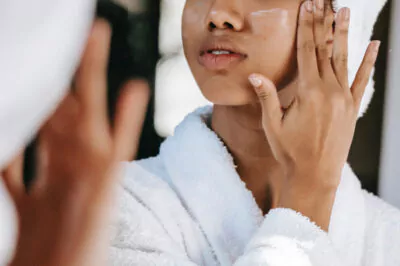
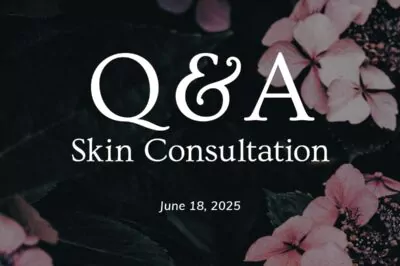
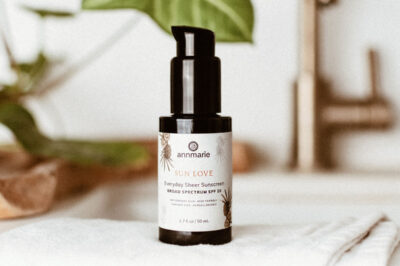
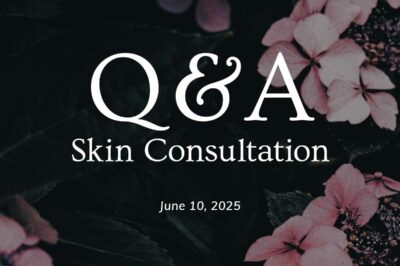
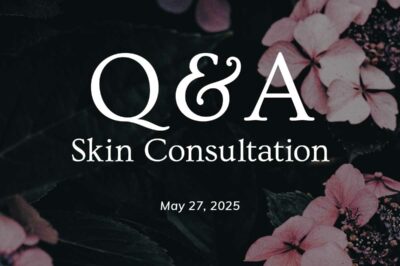
Leave a Reply